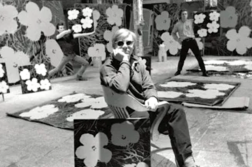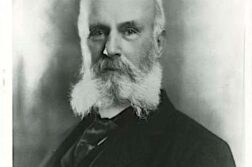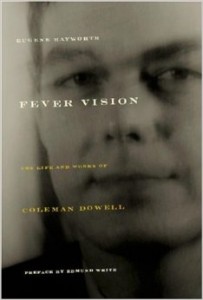 Fever Vision: The Life and Works of Coleman Dowell
Fever Vision: The Life and Works of Coleman Dowell
by Eugene Hayworth
Dalkey Archive Press. 264 pages, $24.95
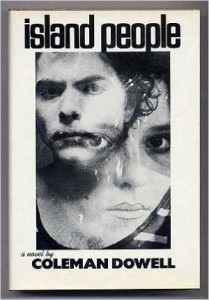 Island People
Island People
by Coleman Dowell
Dalkey Archive Press. 309 pages, $12.95
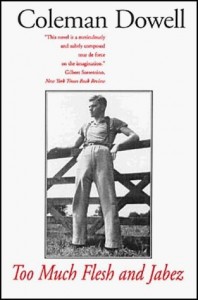 Too Much Flesh and Jabez
Too Much Flesh and Jabez
by Coleman Dowell
Dalkey Archive Press. 151 pages, $9.95
 White on Black on White
White on Black on White
by Coleman Dowell
Serpent’s Tail. 272 pages, $14.95
 A Star-Bright Lie
A Star-Bright Lie
by Coleman Dowell
Dalkey Archive Press. 165 pages, $19.95
FRIENDS OF COLEMAN DOWELL must have endured more than most. Edmund White knew Dowell well and has done much to sponsor his writings since the novelist’s suicide in 1985. He provides a preface to Eugene Hayworth’s new book, Fever Vision, that illustrates just how bleak Dowell’s companionship could be. He “could turn a picnic supper into a Calvary, a tea-party into a martyrdom.” (On the other hand, peculiarly, he was an outstanding cook.) White sketches Dowell deftly in a few pages as a textbook alcoholic who “alternated between grandiosity and self-hatred.” But, as White equally makes clear, Dowell’s temperamental flaws were writerly virtues—not in the sense of diligence, as he “frittered away his days cruising Central Park,” but in fueling his novelistic imagination. Dowell’s endless capacity for paranoiac invention provided him with fantastically baroque plot twists and non-naturalistic, serially destabilized fictional constructions. None of his books is like the others, or indeed much like any by other authors.





